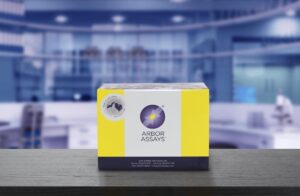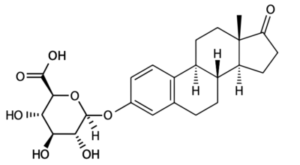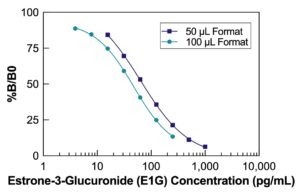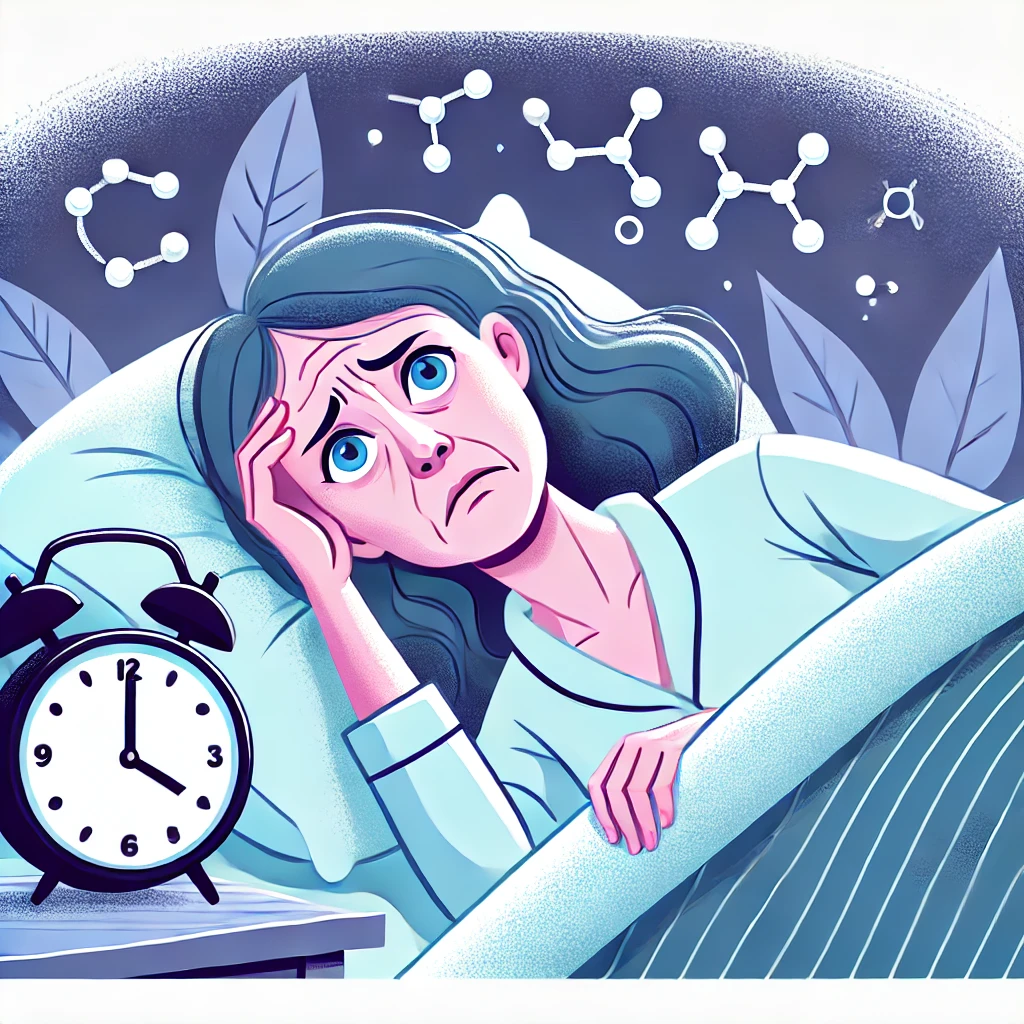Estrone-3-Glucuronide (E1G) ELISA Kit
Personal Touch
Here to Help.
Ready to Ship
Most kits in stock.
Easy to Use
Simple protocols.
- Catalog Number K036-H
- Assay Type Competitive ELISA
- Sample Types Urine, Tissue Culture Media, Fecal Extracts
- Species Estrone-3-glucuronide (E1G) is identical across species
- Assay Duration 2.5 Hours
- Samples/Plate 39 in Duplicate
- Readout Colorimetric, 450 nm
- Sensitivity 7.38 pg/mL
Assay Principle:
The DetectX® Estrone-3-Glucuronide (E1G) ELISA Kit quantitatively measures E1G in urine, tissue culture media, and fecal extracts. This competitive ELISA has a run time of 2.5 hours. Read the complete kit insert for detailed instructions before starting the assay. The kit includes an E1G standard to establish an accurate standard curve.
Protocol Summary:
- Transfer standards or diluted samples into the provided transparent microtiter plate coated with goat anti-rabbit IgG antibody.
- Add E1G peroxidase conjugate and E1G polyclonal rabbit antibody to initiate the immunological reaction.
- Incubate the mixture covered at room temperature with shaking for 2 hours. The reaction varies inversely with the E1G concentration in the sample.
- After the incubation period, wash away excess conjugate and add the TMB substrate. This reacts with the bound conjugate to produce a detectable signal.
- Use a plate reader to measure the signal at 450nm. Calculate the E1G concentration based on the standard curve.
Background:
As the main secreted form of circulating estradiol in mammals, Estrone-3-glucuronide (E1G) is a major estrogen metabolite. Its presence and concentration in bodily fluids are instrumental in understanding various aspects of reproductive health. E1G plays a significant role in the menstrual cycle, influencing ovulation, and overall fertility.
The menstrual cycle in females has distinct phases, each characterized by different hormonal profiles and fertility potentials. The initial phase of the cycle is marked by low fertility, a period when conditions are less favorable for sperm survival and ovum fertilization. The fertile period that follows is a critical window when the chances of fertilization are maximized, primarily influenced by hormonal changes including the rise in E1G levels. Finally, the cycle concludes with a phase of absolute infertility when the ovum is no longer viable, and the body prepares for the potential onset of a new cycle.
In clinical and research settings, the measurement of E1G, along with pregnanediol-3-glucuronide (PDG), in urine or fecal extracts is a non-invasive method to monitor ovarian function. This approach provides valuable insights into the intricate hormonal fluctuations during the menstrual cycle, aiding in the detection of the fertile window, understanding ovulation patterns, and evaluating overall reproductive health. The quantification of E1G is particularly important in fertility studies, contraceptive research, and the management of reproductive health disorders.
The DetectX® Estrone-3-Glucuronide (E1G) ELISA Kit offers an efficient, accurate, and non-invasive means to measure E1G levels. This kit is useful for clinicians and researchers in reproductive medicine and gynecology, enabling them to gain a deeper understanding of menstrual cycle dynamics, ovulation, and the hormonal regulation of fertility.






